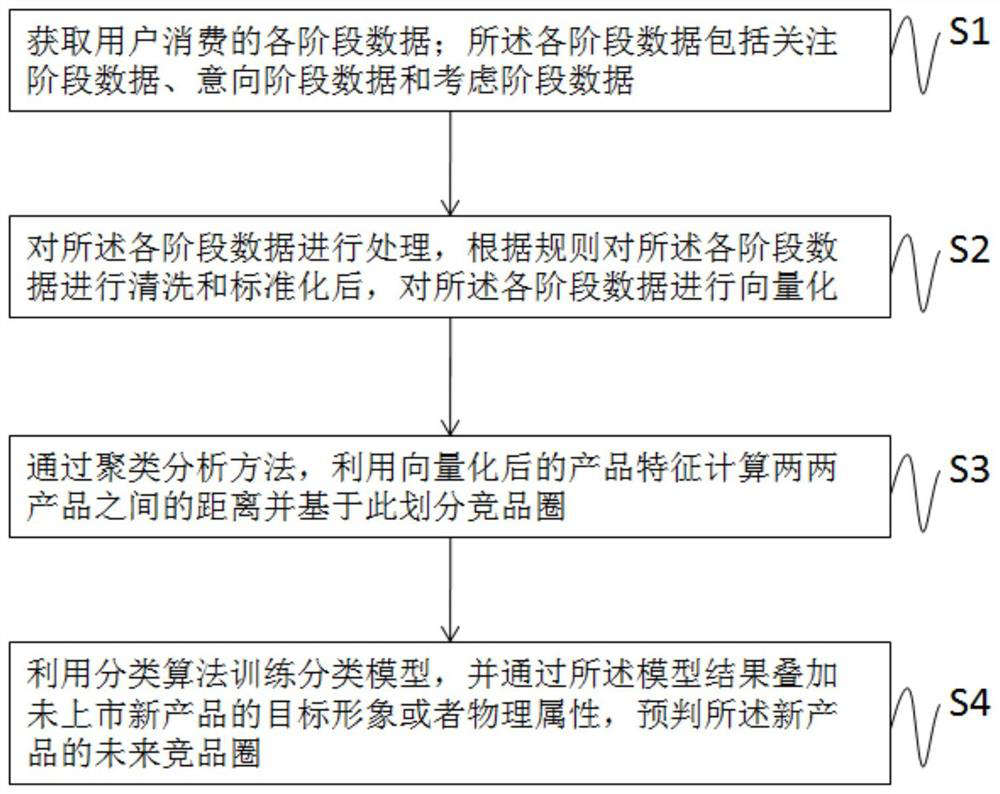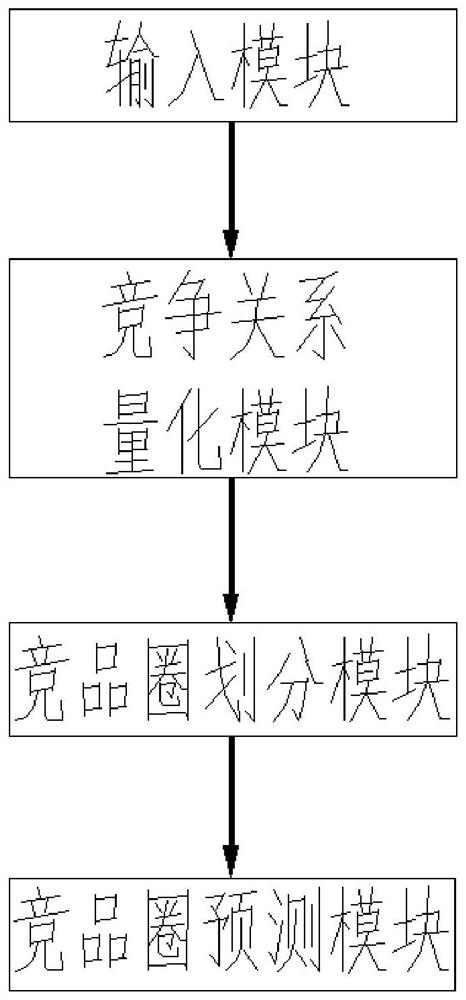A method and device for quantitatively generating product competition relationship based on big data
A big data and product technology, applied in the field of big data analysis, can solve the problems of lack of competitive panorama, insufficient comparison, and inability to predict the belonging of competing products circle
- Summary
- Abstract
- Description
- Claims
- Application Information
AI Technical Summary
Problems solved by technology
Method used
Image
Examples
Embodiment 1
[0046] Please refer to figure 1 , a preferred embodiment of the present invention provides a method for quantitatively generating product competition relationships based on big data, including:
[0047] Step 1, obtaining data of each stage of user consumption; the data of each stage includes data of attention stage, data of intention stage and data of consideration stage;
[0048] Step 2, processing the data of each stage, cleaning and standardizing the data of each stage according to the rules, and vectorizing the data of each stage;
[0049] Step 3. Using the vectorized product features to calculate the distance between two products through cluster analysis method and divide the competition circle based on this.
[0050] In this embodiment, the attention stage data includes search and comment network big data of related products; the intention stage data includes comparison times between related products and big network data that reflects the relationship between related pr...
Embodiment 2
[0052] In this embodiment, in step 2, in the processing of the data of each stage, the processing of the data of the attention stage includes:
[0053] Identify and remove unqualified reviews;
[0054] Segment each comment based on the industry thesaurus and word segmentation software, and extract key information; the key information includes product image, product function, and analogous other related products;
[0055] When the mention rate of other products being compared exceeds the preset mention rate threshold, the image of the product being compared is weighted and transferred to the image of this product;
[0056] The image and function of each product are converted into vectors through the word vector tool, and the image word vector and function word vector of each product are integrated into a vector, and then the distance between the two products is calculated using the vector calculation algorithm.
Embodiment 3
[0058] In this embodiment, in step 2, in the processing of the data of each stage, the processing of the data of the intention stage includes:
[0059] Judging the total number of times the user ID compares the product, when the total number of times the user ID compares the product is higher than the multiple threshold of the average number of comparisons of each user ID, then remove all the comparison behaviors that occur by the user ID;
[0060] The number of times that two products are compared forms a comparison matrix, and the above comparison matrix is normalized by using the total number of times each product is compared;
[0061] The distance between the two products is calculated by vector arithmetic operation on the normalized comparison matrix data.
PUM
 Login to View More
Login to View More Abstract
Description
Claims
Application Information
 Login to View More
Login to View More - R&D
- Intellectual Property
- Life Sciences
- Materials
- Tech Scout
- Unparalleled Data Quality
- Higher Quality Content
- 60% Fewer Hallucinations
Browse by: Latest US Patents, China's latest patents, Technical Efficacy Thesaurus, Application Domain, Technology Topic, Popular Technical Reports.
© 2025 PatSnap. All rights reserved.Legal|Privacy policy|Modern Slavery Act Transparency Statement|Sitemap|About US| Contact US: help@patsnap.com


